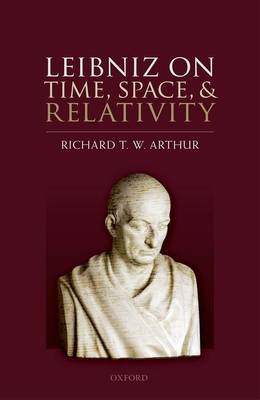
- Afhalen na 1 uur in een winkel met voorraad
- Gratis thuislevering in België vanaf € 30
- Ruim aanbod met 7 miljoen producten
- Afhalen na 1 uur in een winkel met voorraad
- Gratis thuislevering in België vanaf € 30
- Ruim aanbod met 7 miljoen producten
Zoeken
Omschrijving
In this book, Arthur gives fresh interpretations of Gottfried Leibniz's theories of time, space, and the relativity of motion, based on a thorough examination of Leibniz's manuscripts as well as his published papers. These are analysed in historical context, but also with an eye to their contemporary relevance. Leibniz's views on relativity have been extremely influential, first on Mach, and then on Einstein, while his novel approach to geometry in his analysis situs inspired many later developments in geometry. Arthur expounds the latter in some detail, explaining its relationship to Leibniz's metaphysics of space and the grounding of motion, and defending Leibniz's views on the relativity of motion against charges of inconsistency. The brilliance of his work on time, though, has not been so well appreciated, and Arthur attempts to remedy this through a detailed discussion of Leibniz's relational theory of time, showing how it underpins his theory of possible worlds, his complex account of contingency, and his highly original treatment of the continuity of time, providing formal treatments in an appendix. In other appendices, Arthur provides translations of previously untranslated writings by Leibniz on analysis situs and on Copernicanism, as well as an essay on Leibniz's philosophy of relations. In his introductory chapter he explains how the framework for the book is provided by the interpretation of Leibniz's metaphysics he defended in his earlier Monads, Composition, and Force (OUP 2018, winner of the 2019 annual JHP Book Prize for best book in the history of philosophy published in 2018).
Specificaties
Betrokkenen
- Auteur(s):
- Uitgeverij:
Inhoud
- Aantal bladzijden:
- 422
- Taal:
- Engels
Eigenschappen
- Productcode (EAN):
- 9780192849076
- Verschijningsdatum:
- 16/03/2022
- Uitvoering:
- Hardcover
- Formaat:
- Genaaid
- Afmetingen:
- 165 mm x 237 mm
- Gewicht:
- 816 g

Alleen bij Standaard Boekhandel
+ 418 punten op je klantenkaart van Standaard Boekhandel
Beoordelingen
We publiceren alleen reviews die voldoen aan de voorwaarden voor reviews. Bekijk onze voorwaarden voor reviews.











